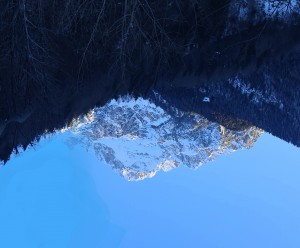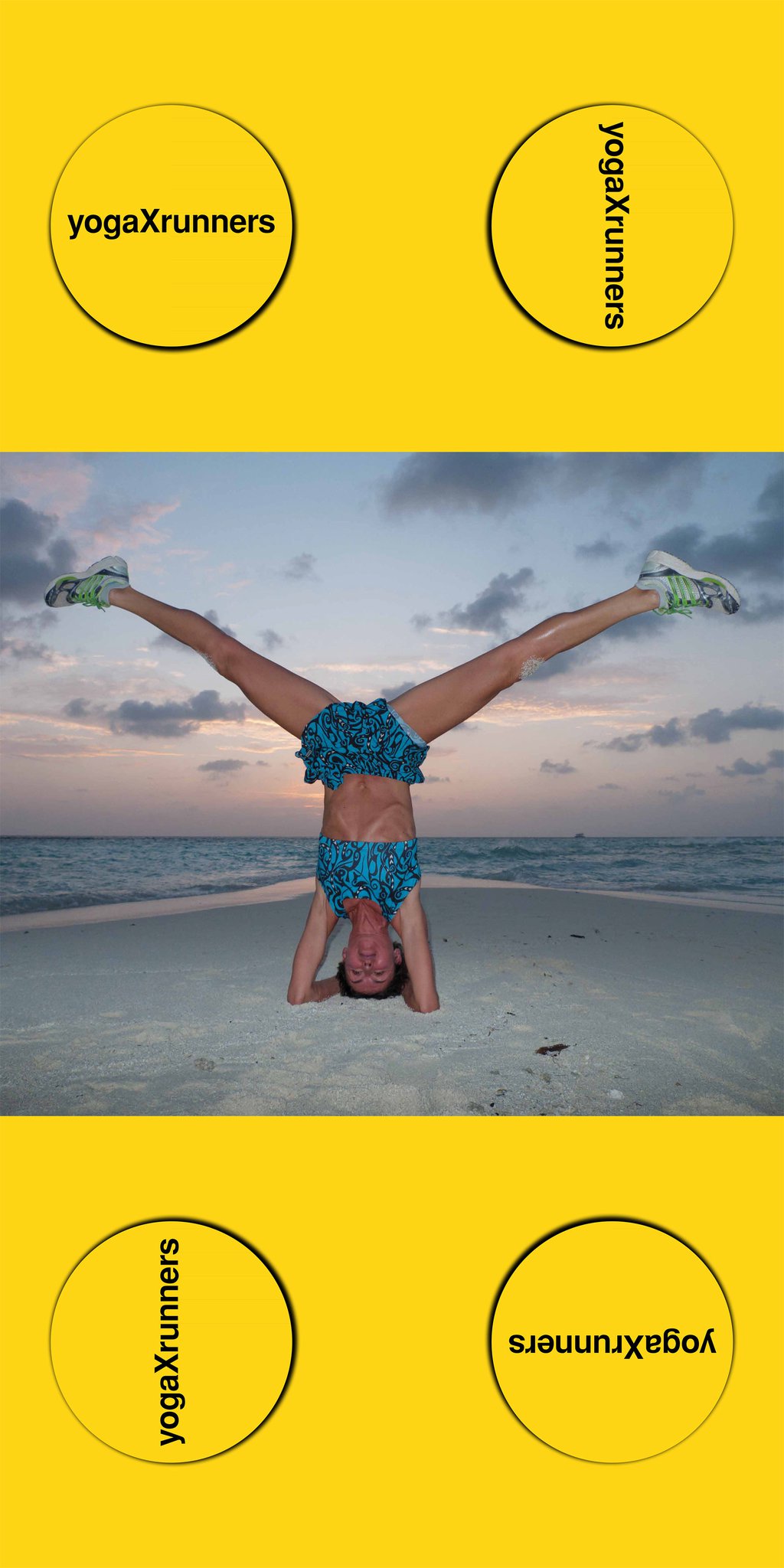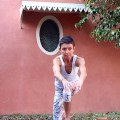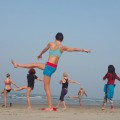for ENGLISH scroll down
‘Dopo la salita c’e’ la discesa’ e’ un mantra che si impara velocemente in montagna e sottende la regola dell’endurance (misurare lo sforzo sul ciclo completo) e un memorandum psicologico che è il motivo originale della parola ombrello YOGA : tenere a bada l’ego salva la vita (Mukta) dalla sofferenza (Dukka).
Dopo 5 settimane di allenamento del respiro e al freddo e ghiaccio quassù in Dolomiti, il prossimo sabato 17 febbraio sarò a Barcellona alla Wim Hof Experience direttamente con lui Wim Hof l’ ICEMAN che propone un metodo per la creazione di energia extra e pura per tutti con la respirazione e lo shock del freddo .
Il ‘ metodo’ non è suo ma è antico come lo yoga del Tibet (mai sentito parlare di Tummo , e dei monaci tibetani che al gelo col solo respiro sciolgono la neve ? )
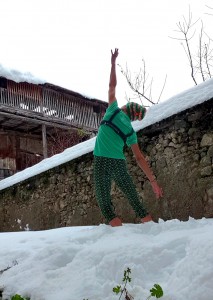
Devo dire che con le mie radici montane e l’ abitudine al freddo e soprattutto con la pratica di movimenti spinali e il Pranayama dello yoga Synergy di Simon Borg Olivier partivo avvantaggiata . (vedi video su you tube canale tite togni
https://youtu.be/kiqcxTg0y3M )
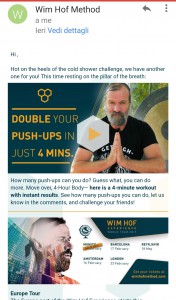
Il test dei pushups in iperventilazione con cui Wim Hof ha suscitato interesse maggiore https://youtu.be/uYbHEcYbHmIè utile per capire come si può modulare la chimica interna e il motore neurologico col respiro . Iperventilare accende il sistema simpatico , quello dell’azione e va bene prima di uno sport o competizione o impegno MA dev’essere un’eccezione nell’ambito totale delle attività altrimenti si rischia in vari modi che l’ #inner prodotto ti …bruci. (infortuni, acidosi). lo sanno bene gli apneisti che iperventilare rende meno vigili sul bisogno di respirare e si rischia di svenire ( e affogare) negli ultimi metri di risalita. La prima lezione di Apnea Academy di Umberto Pelizzari e’ : vietato iperventilare.
La scienza dello sport da tempo ha confermato che le attività ad alta intensita’ e lo sforzo non devono superare il 20% del lavoro totale. (vedi articolo di #uphillathlete di Steve House https://www.uphillathlete.com/coach-sam-naneys-core-principles-of-endurance-training/ ), ma gli sportivi , atleti e soprattutto gli allenatori che vigilano su di essi, tendono a dimenticarsene rispetto al mantra vecchio ‘ no pain no gain’.
Ho notato infatti che nell’ambito del ‘ Metodo’Wim Hof quasi tutti i post di commento, video dimostrativi e domande di praticanti vertono sulla prima parte , l’iperventilazione, rispetto alla seconda di recupero di un equilibrio con il respirare meno, l’ipoventilazione e l’apnea, che invece nello yoga è la meta e il viaggio del Pranayama, l’ arte del controllo e distribuzione dell’energia.
D’altra parte Wim Hof stesso non incoraggia il contrario quando propone il test dei pushup subito dopo l’iperventilazione e non fa seguire un uguale tempo di ipo. E’ un po come consigliare gli anabolizzanti per la massa muscolare o una dieta di sole proteine per dimagrire: è una scelta di marketing , d’effetto in tutti i sensi che sicuramente ha effetti positivi immediati nelle sue tasche ma lo stesso non si può dire nelle tasche e per la salute del praticante né sulla breve nè sulla lunga distanza di una vita sportiva .
Siccome però da Yogi sappiamo che la consapevolezza tutto (Viveka iakti ) la discriminazione ci consente di essere indipendenti (Kaivalya) oltre che liberi dai condizionamenti del mercato e dell’ego (Samadhi) , possiamo utilizzare l’ idea dei Wim di iperventilare , poi fare i pushups, non illuderci e subito far seguire un ipoventilazione che duri almeno tanto quanto l’iper che può essere : UJJAY: ossia un atto respiratorio in 1′ ( 30″ Inps 30″ esp) oppure, progredendo, inserire fino a farle diventare 1′ le apnee (KUMBHAKA) .
AVVERTENZA: Affinche’ l’ipoventilazione, cioè RESPIRARE DI MENO , abbia la cascata chimica positiva e riequilibrante (alcalinizzante e soprattutto rilassare accendendo il paradigmatico ) l’ atto respiratorio non deve essere superiore al minuto! (per la spiegazione rimando all’effetto bohr e alla considerazione del volume medio di aria nei polmoni di 5 litri. Simon Borg Olivier lo spiega bene ) .
“RIMANI FRESCO E VIGILE” BKS Iyengar
ENGLISH
What goes up must be down is a mantra that learns quickly in the mountains and underlies the endurance rule (measure the effort on the complete cycle) and a psychological memorandum that is the motive generating the umbrella word YOGA: tame your ego saves life (Mukta) from suffering (Dukka).
After 5 weeks of breath training and in the cold and ice here in the Dolomites, next Saturday, February 17 I will be in Barcelona at the #WimHofExperience directly with him Wim Hof, the exceptional athlete, the #ICEMAN proposing a method for creating extra and pure energy for all with the breathing and the shock of the cold.
The ‘method’ is not his own but is as ancient as the yoga of Tibet (never heard of Tummo, and of the Tibetan monks who melt the snow in the freezing cold?)
I must say that my mountain roots and the habit of cold and above all with the practice of spinal movements and the Pranayama of YogaSynergy by Simon Borg-Olivier gave me an advantage at the start, but the experiment was worth taking . (see video on you tube canale tite togni
https://youtu.be/kiqcxTg0y3M)
The hyperventilation pushups test with which Wim Hof has aroused greater interest https://youtu.be/uYbHEcYbHmIt and it is useful for understanding how one can modulate the internal chemistry and the neurological engine with the breath. Hyperventilation turns on the sympathetic system, that of the action and goes well before a sport or competition , but there is a caveat and a warning: it must be an exception in the total amount of the activities otherwise you risk in various ways that the #innerfire you produce , it … burns you out. (injuries, acidosis). Apneists know that hyperventilating makes less vigilant ( “high”) on the need to breathe so you can pass out (and drown) in the last meters of ascent. The first lesson of Apnea Academy by Umberto Pelizzari is: NO HYPERVENTILATION.
Sports science has long confirmed that high-intensity activities must not exceed 20% of total work. (see Steve House’s Uphill Athlete article https://www.uphillathlete.com/coach-sam-naneys-core-principles-of-endurance-training/), but athletes and especially the coaches tend to forget it in favour of the old ‘no pain no gain’ mantra.
I have noticed that in the ‘Method’Wim Hof almost all the commentary posts, demonstration videos and questions of practitioners are about the first part, the hyperventilation, compared to the second recovery of a balance with the breathing less, the hypoventilation , which in yoga is the goal and the journey of Pranayama, the art of energy control and distribution.
On the other hand, Wim Hof himself does not encourage the contrary when he proposes the pushup test immediately after hyperventilation and does not follow with an equal hypoventilation time. It’s a bit like recommending steroids for muscle mass or a protein-only diet to lose weight: it’s a marketing choice, certainly effective for some pockets but the same can not be said in the pockets and for the health of the practitioner neither on the short nor on the long run .
Since, however, as Yogi we know that awareness (Viveka iakti) discrimination allows us to be independent (Kaivalya) as well as free from market and ego constraints (Samadhi), we can use the idea of hyperventilating , then do pushups, do not fool ourselves and immediately follow a hypoventilation that lasts at least as much as the hyper time, and we can do it in 2 progressive modes:
– UJJAY: SLOW BREATHING , breathe in 1 ‘(30 “Inhale, 30″ exhale)
– inserting KUMBHAKA .
WARNING: In order for the hypoventilation, that is, to BREATHE LESS, to have a positive and rebalancing chemical cascade (alkalizing and above all to relax and switch on the parasympathetic system) the breath cycle must not exceed one minute! (for the explanation I refer to simon Borg Simon Borg-Olivier, who as experienced physio and free diver as well as yoga practioner , explains it with the bohr effect and to the consideration of the average volume of air in the lungs of 5 liters ).
“STAY FRESH AND ALERT” BKS IYENGAR
tite
www.yogaxrunners.com
Related Posts

